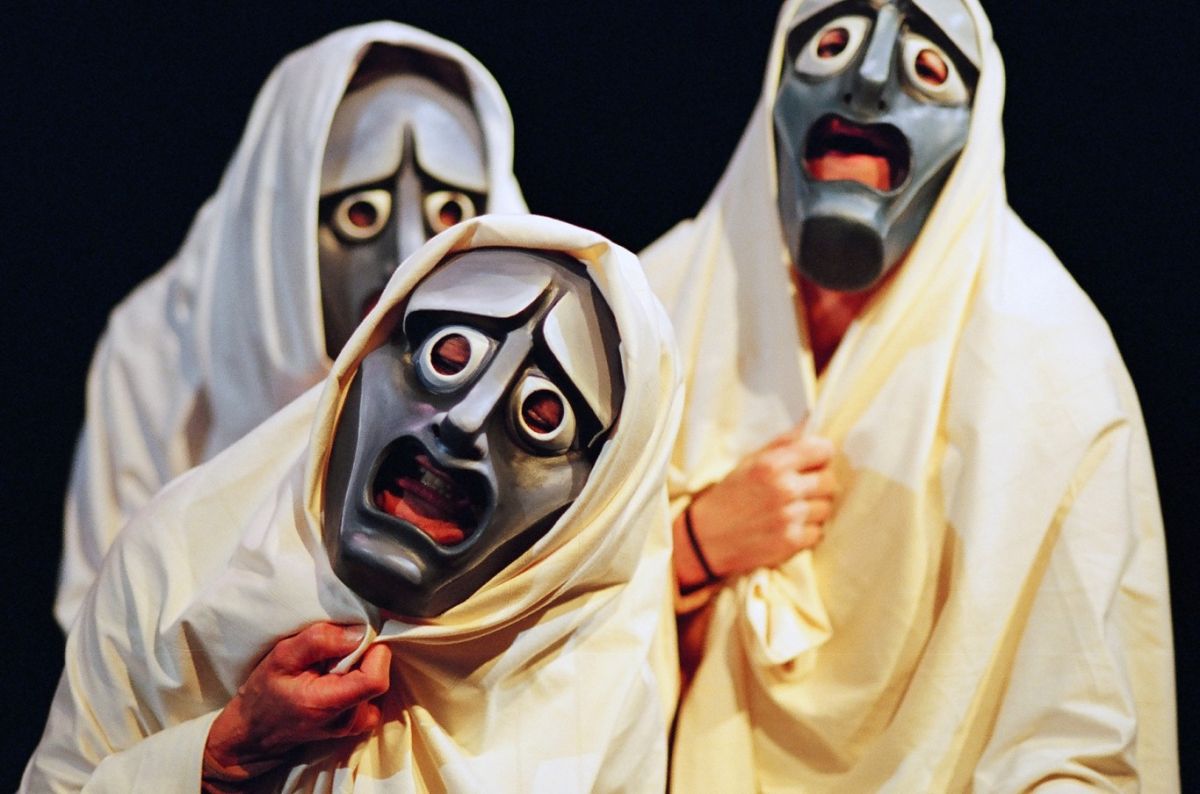From these and other songs Athens developed the art of tragedy. At first largely sung as choral hymns, the tragedies later began to deal with human problems, and individual actors’ roles became more important. The first competition to choose the best tragedy was sponsored by Pisistratus in 534 B.C., and annual contests were held thereafter. Many hundreds of tragedies were written; comparatively few have survived in full, but we have fragments of others. Aristotle (384-322) believed that it was the purpose of tragedy to arouse pity and terror in the spectators and to purge or purify them by causing them to reflect on the fearful punishments that highly placed men and women brought upon themselves by their own sins, the worst of which was hubris, or “arrogance.”
The first, and some would say the greatest, of the three chief tragedians whose works we have was Aeschylus (c. 525-456 B.C.), of whose seventy-odd tragedies seven survive. In the Oresteia trilogy, Aeschylus dealt with tragedies in the family of Agamemnon, who sacrificed his daughter Iphigenia to get a favorable wind to go to Troy, was murdered by his unfaithful wife Clytemnestra on his return, and was avenged by his son Orestes, who killed his mother on the order of Apollo. Orestes suffered torments by the Furies and was acquitted by a court presided over by Athena; but only Zeus succeeded in transforming the Furies into more kindly creatures. Crime and punishment, remorse and release, a benevolent and secure god over all—these Aeschylus portrayed in lofty, moving verse.
Sophocles (c. 496-406 B.C.) wrote many tragedies, of which only ten survive. He believed deeply in Athenian institutions and took an active part in the public life of Periclean Athens. In his Antigone, the niece of Creon, tyrant of Thebes, defied her uncle’s harsh decision that the body of her brother, killed while leading a rebellion, must be left exposed to be devoured by beasts of prey. Proclaiming that divine law required decent burial, she disobeyed Creon and caused the proper ceremonial earth to be sprinkled on the body. Knowing she would die for her defiance, she acted in obedience to her conscience and resisted the dictator. Antigone has carried its message of the sanctity of the individual conscience down through the centuries.
Sophocles’ last tragedy, Oedipus at Colonus, produced after his death, dealt with the old age of the famous Theban king who in ignorance had killed his father and married his mother, and who had torn out his own eyes in horror when he discovered what he had done. Tempered by years of suffering, he sought sanctuary to die, and received it from Theseus, king of Athens. Reflecting upon the terrible story of Oedipus and on the trials of all human life, Sophocles’ chorus sang that it is best never to be born, for all humans are but phantoms, shadows whose actions inevitably bring tragedy upon them.
Nineteen plays remain of the many written by the last of the great Attic tragedians, Euripides (c. 485-406 B.C.), who focused upon human psychology, with less emphasis on divine majesty. More realistic in their introduction of children, slaves, and other characters upon the scene. his plays were also more human in their exploration of the far reaches of the obsessed mind. The Hippolytus showed the uncontrollable sexual passion of a decent woman, Phaedra, for her ascetic stepson Hippolytus. Ashamed of her lust, she accused Hippolytus of having attacked her he was executed, and she committed suicide. The Medea showed a woman so far gone in agony brought about by rejection of her love that she killed her children in a fit of madness.
The Alcestis depicted a husband so selfish that he gladly accepted the offer of his devoted wife to die for him so that he might prolong his life. The Trojan Women presented the sufferings of the women of Troy at the hands of the Greeks. Staged in the same year as the Athenian atrocity at Melos, it must have caused the audience many uncomfortable moments. And The Bacchae explored the excesses of religious ecstasy, showing a frenzied queen who tore her son to bits, thinking he was a lion. The enduring beauty of all these plays is that we can discuss their meanings in the context of each succeeding century.

